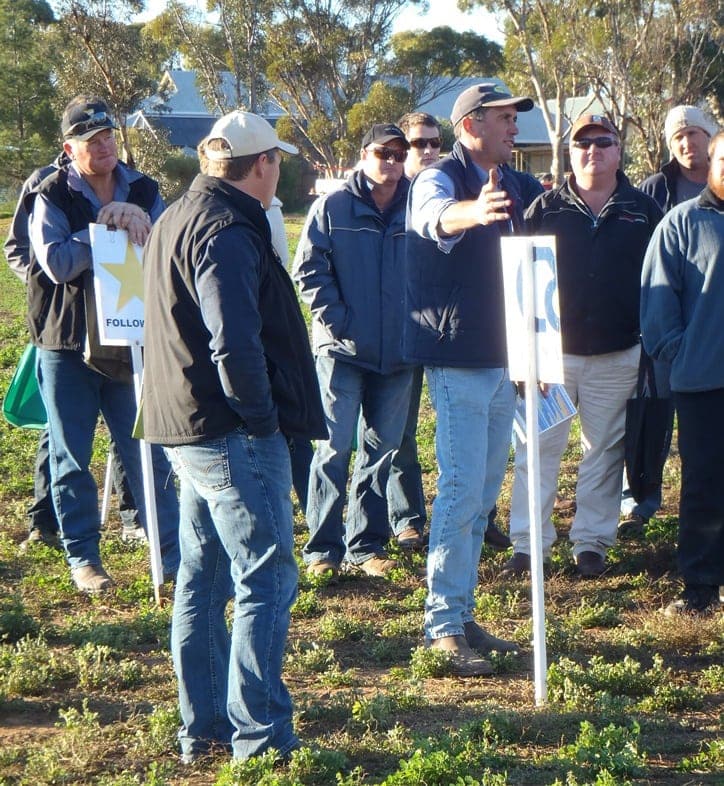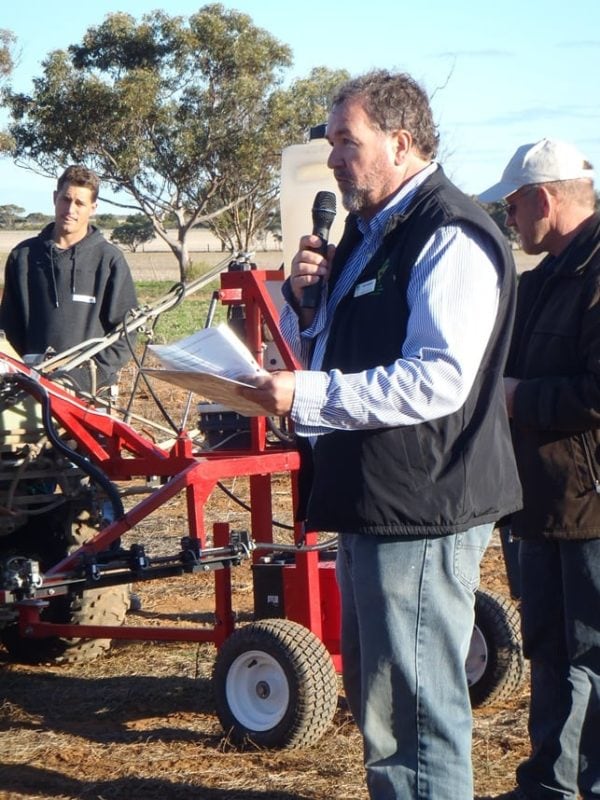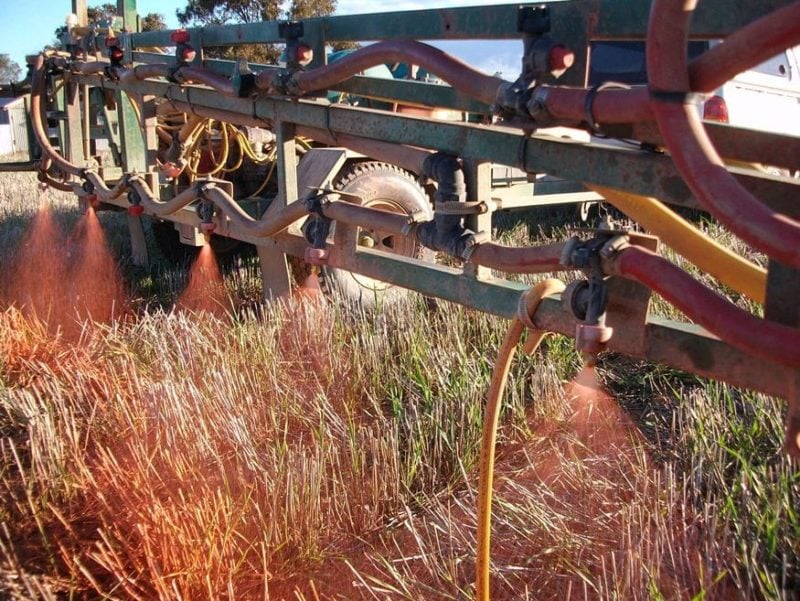EPARF Member Day 2012
The aim of the '$pray Technology' event was to provide farmers with the latest spraying research, herbicide and weed technology, enabling them to implement strategies in their system to enhance and improve sustainable farming practices.
Matthew Dunn, EPARF Chairperson welcomed the group of 160 to Minnipa Agricultural Centre and emphasized that the day was to learn more about this part of the farming operation which has become costly, time consuming, diverse and the most important procedure that we do in our farming business. Research, technology, legislation and costs are rapidly changing the way we use pesticides.
Dr Chris Preston, University of Adelaide spoke on how herbicides behave in plants. The various pathway of absorption into the plant moving intact to the site of action and what inhibits the target site. Environmental conditions such as soil moisture, temperature, humidity and frost influence herbicide performance. These factors influence perceptions about herbicide resistance when in fact it could be herbicide performance giving the impression of wide spread resistance. Secondly if not strongly resistant to the herbicide, performance could be variable depending on environmental conditions. Where resistance is strong, the weeds will survive regardless of conditions.
Craig Day, Spray Safe and Save Pty Ltd gave an outstanding presentation on legislation and the impact of spray drift. Craig has a spray contracting business so talked from a practical angle. He spoke about the APVMA operating principles in relation to spray drift. The industry needs to learn how to spray with courser droplets and to share this responsibility with the person applying the pesticide. It is not just about selecting the right chemical. Spray drift is not solely an issue of horticultural and other susceptible field crops, native vegetation also needs to be considered.
Jorg Kitt, Business Manager Adjuvant Nufarm Australia was clear on droplet size control, spray quality and the impact of adjuvants. Using appropriate nozzles are important and adjuvant can alter spray quality significantly and need to be considered. A Multiple tank mix solutions guide was given out and clear steps should be observed. A practical demonstration on Kitts talk helped visualise the differences.
John Both, Research and Development Officer Nufarm Australia spoke on his work with summer spraying and testing the relevance of using Delta T figures. Delta T is a simple guide that cannot take into account soil moisture, plant health, plant growth stage, herbicide mode of action, use of adjuvants or sprayer set up. If a weed is healthy it is likely to be killed in most conditions.
Group demonstrations were held in three concurrent groups to give attendees a more interactive opportunity to talk to the experts.
- Andy Bates showed trials plots which illustrated the effectiveness of nozzle selection, ground speed and pressure on drift and penetration;
- Jorg Kitt gave a practical droplet size and distribution demonstration using different nozzle types and adjuvant ratios;
- Brendan Williams, Hawkeye Precision demonstrated a mini version of his weed sensing machine with Peter Kuhlmann talking from a farmer user perspective.
An interactive panel session was held at the end of the day with great interaction from questioning members. The wide range of speakers gave direct answers to individual’s observations and questions.
A night walk showed the effect of spray distribution with the use of florescent dye and ultraviolet light.
The evaluation survey of the day showed evidence that farmers found the program highly relevant to their farming business and either learnt something new or reinforced their current knowledge. Majority of farmers intended to do something different as a result of knowledge gained on the day.





